All content on this site is intended for healthcare professionals only. By acknowledging this message and accessing the information on this website you are confirming that you are a Healthcare Professional.
The gvhd Hub website uses a third-party service provided by Google that dynamically translates web content. Translations are machine generated, so may not be an exact or complete translation, and the gvhd Hub cannot guarantee the accuracy of translated content. The gvhd and its employees will not be liable for any direct, indirect, or consequential damages (even if foreseeable) resulting from use of the Google Translate feature. For further support with Google Translate, visit Google Translate Help.
The GvHD Hub is an independent medical education platform, sponsored by Medac and supported through grants from Sanofi and Therakos. The funders are allowed no direct influence on our content. The levels of sponsorship listed are reflective of the amount of funding given. View funders.
Now you can support HCPs in making informed decisions for their patients
Your contribution helps us continuously deliver expertly curated content to HCPs worldwide. You will also have the opportunity to make a content suggestion for consideration and receive updates on the impact contributions are making to our content.
Find out more
Create an account and access these new features:
Bookmark content to read later
Select your specific areas of interest
View GvHD content recommended for you
Key findings from a retrospective study investigating ruxolitinib + ECP in SR-aGvHD
Do you know... In a recent retrospective study of ruxolitinib + ECP vs ruxolitinib alone for the treatment of SR-GvHD, at what point did the addition of ECP result in a higher overall response rate (ORR) vs ruxolitinib alone?
High-dose glucocorticoids are the standard of care for first-line treatment of GvHD; however, not all patients experience a sustained response. Ruxolitinib is approved for the treatment of steroid-refractory (SR)-GvHD, but studies suggest that long-term disease control remains an unmet need. Therefore, novel strategies, including combination therapies, are of clinical interest. Key findings from a German retrospective study by Lastovytska et al. have been published in Haematologica, demonstrating long-term outcomes with ruxolitinib + extracorporeal photopheresis (ECP) vs ruxolitinib alone in SR-acute GvHD.
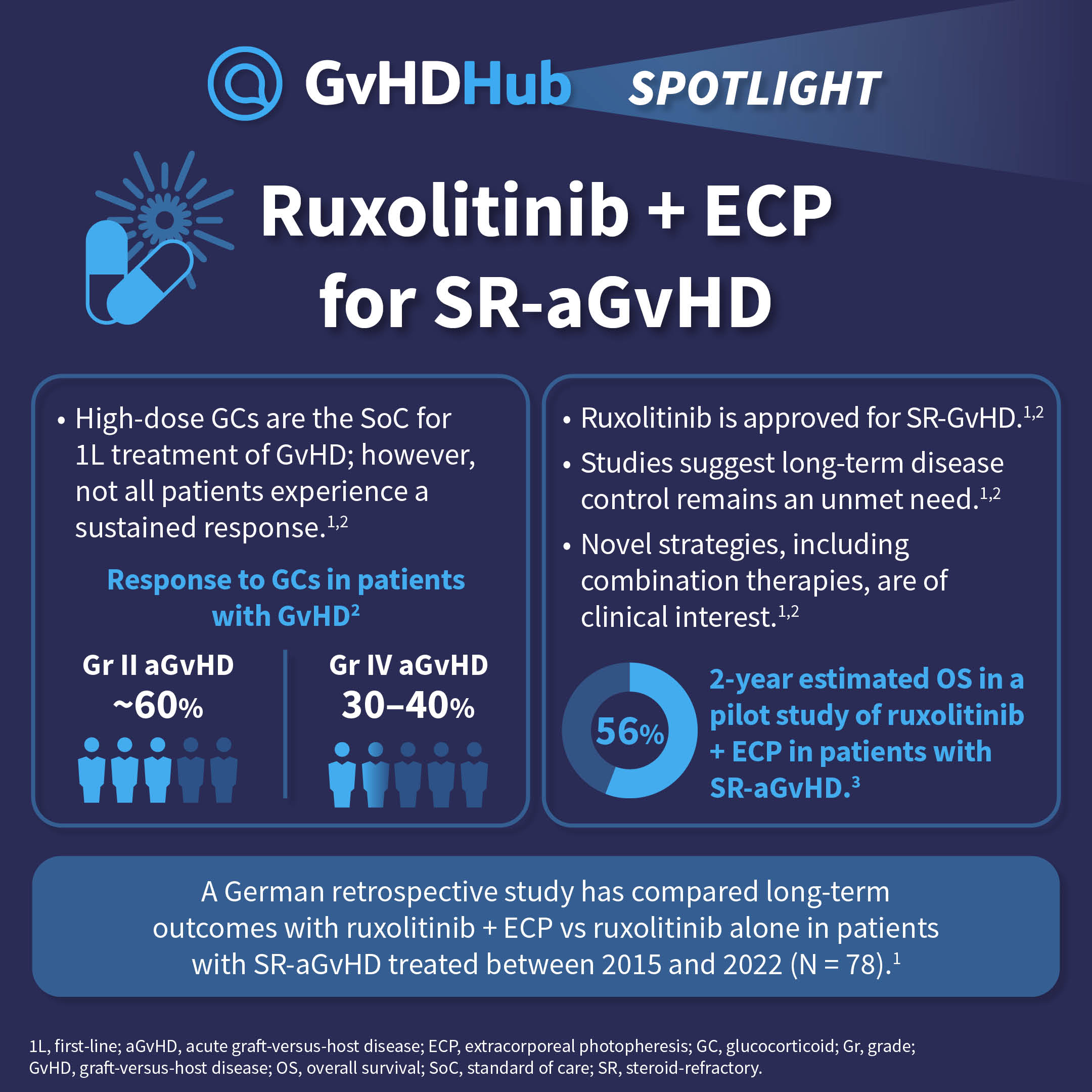
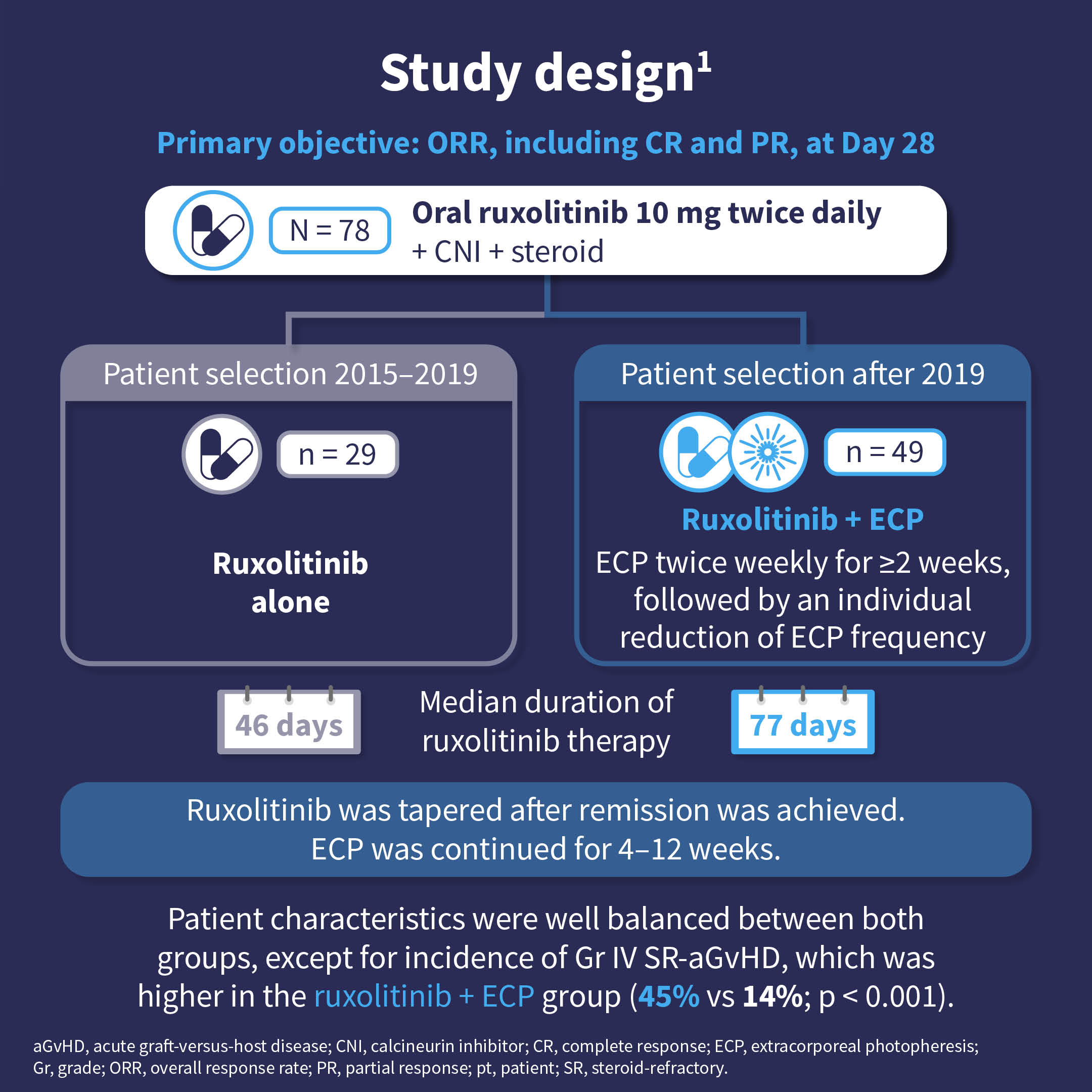
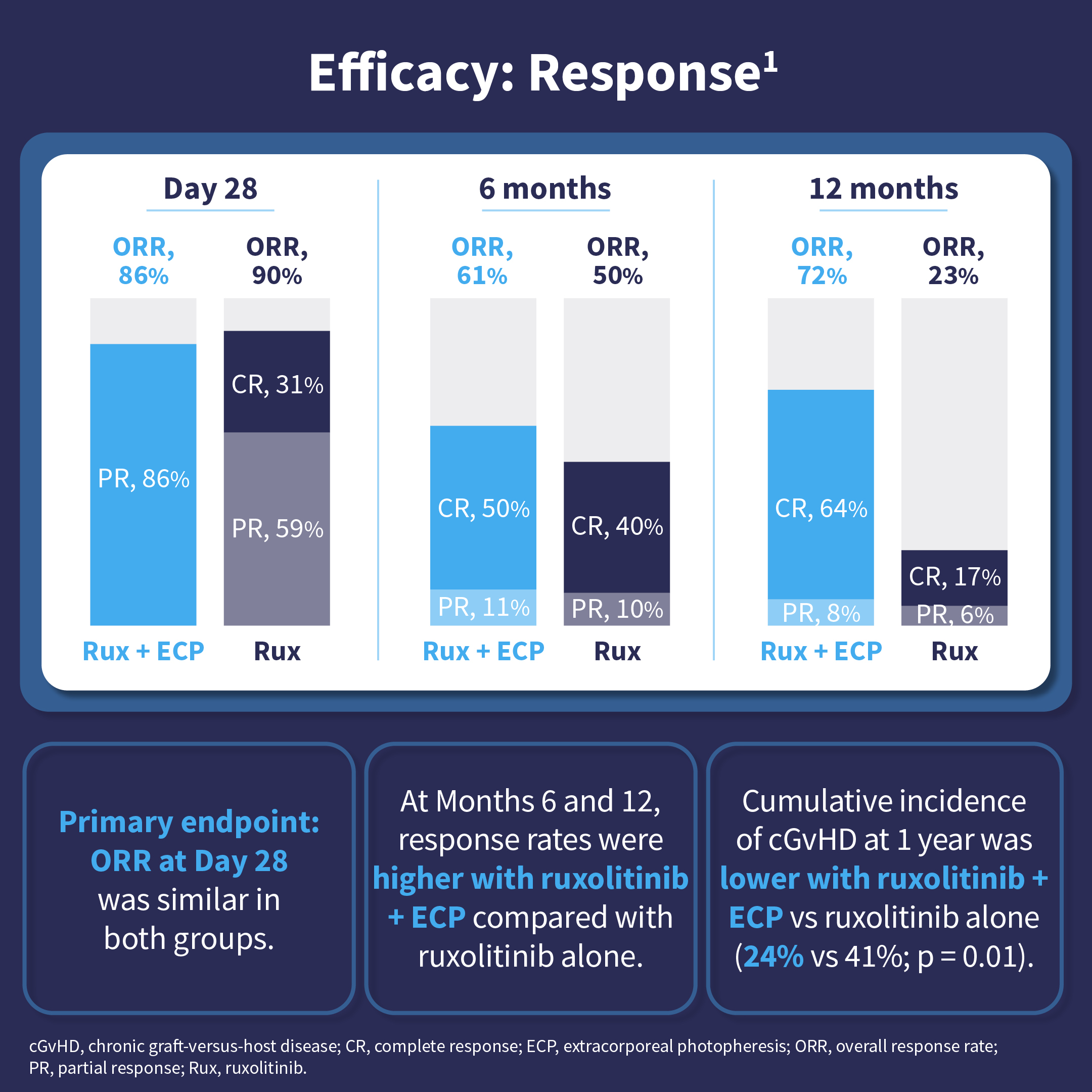
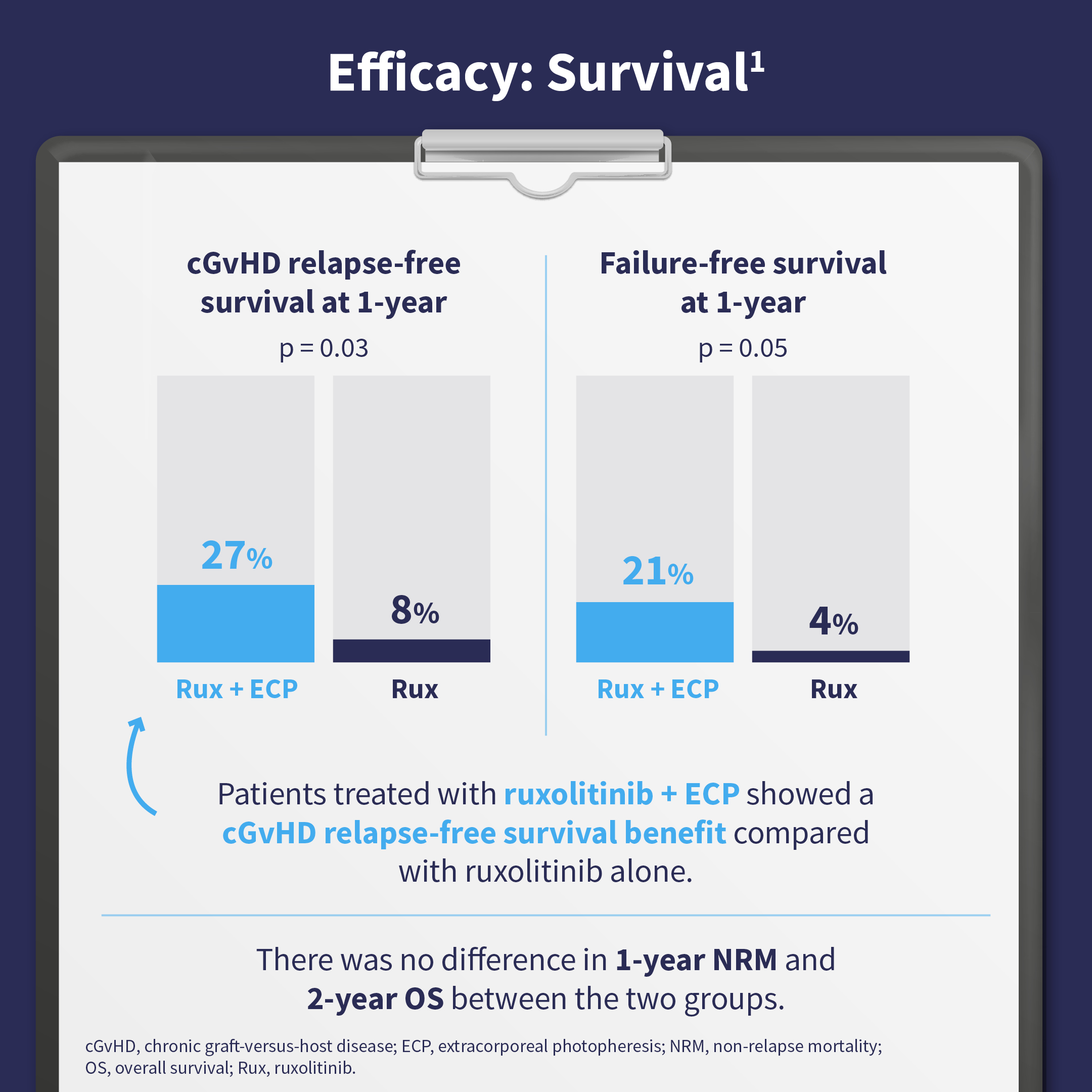
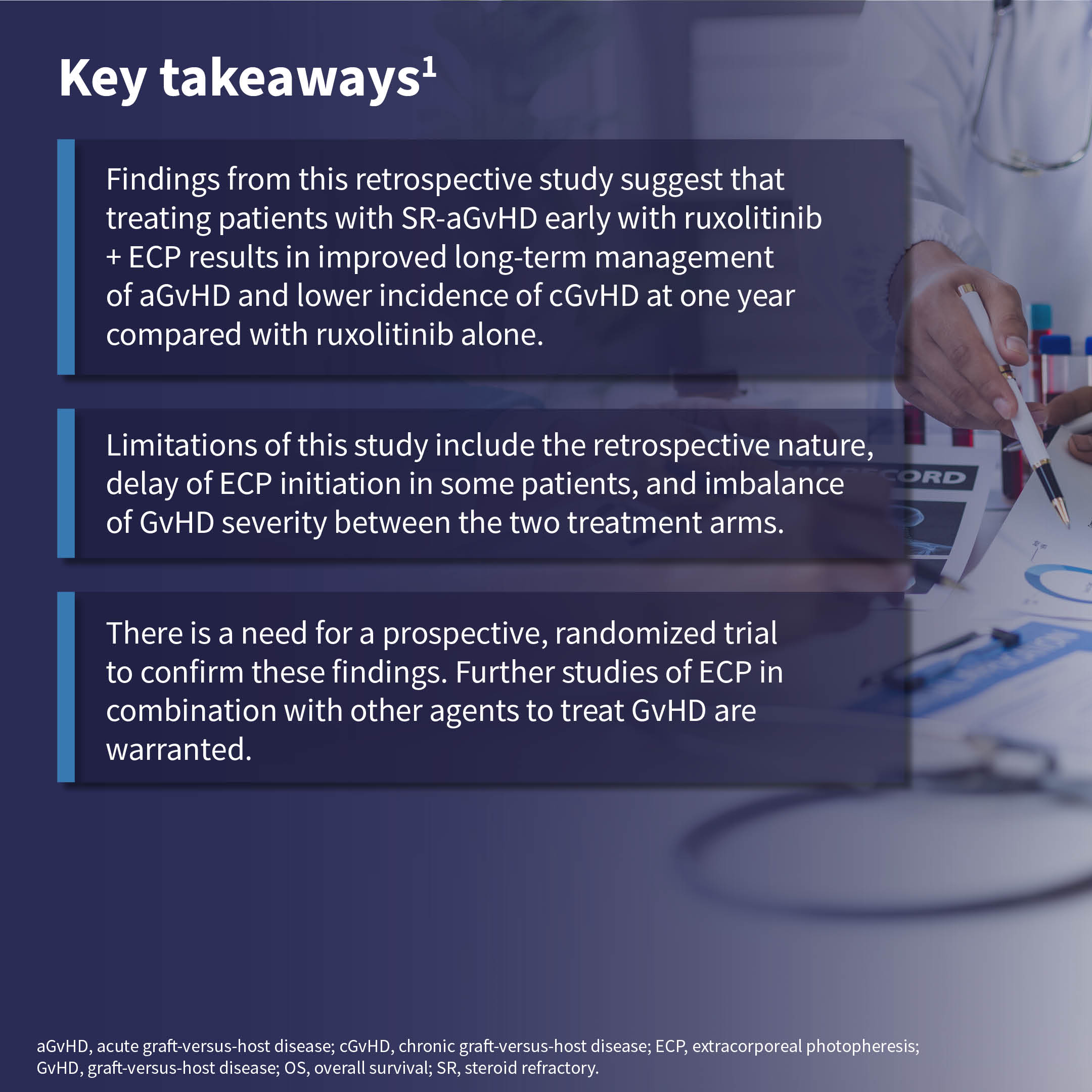

This educational resource is independently supported by Therakos. All content was developed by SES in collaboration with an expert steering committee; funders were allowed no influence on the content of this resource.
Please indicate your level of agreement with the following statements:
The content was clear and easy to understand
The content addressed the learning objectives
The content was relevant to my practice
I will change my clinical practice as a result of this content
Your opinion matters
What do you see as the main advantage of including ECP + Rux as an upfront combination?


